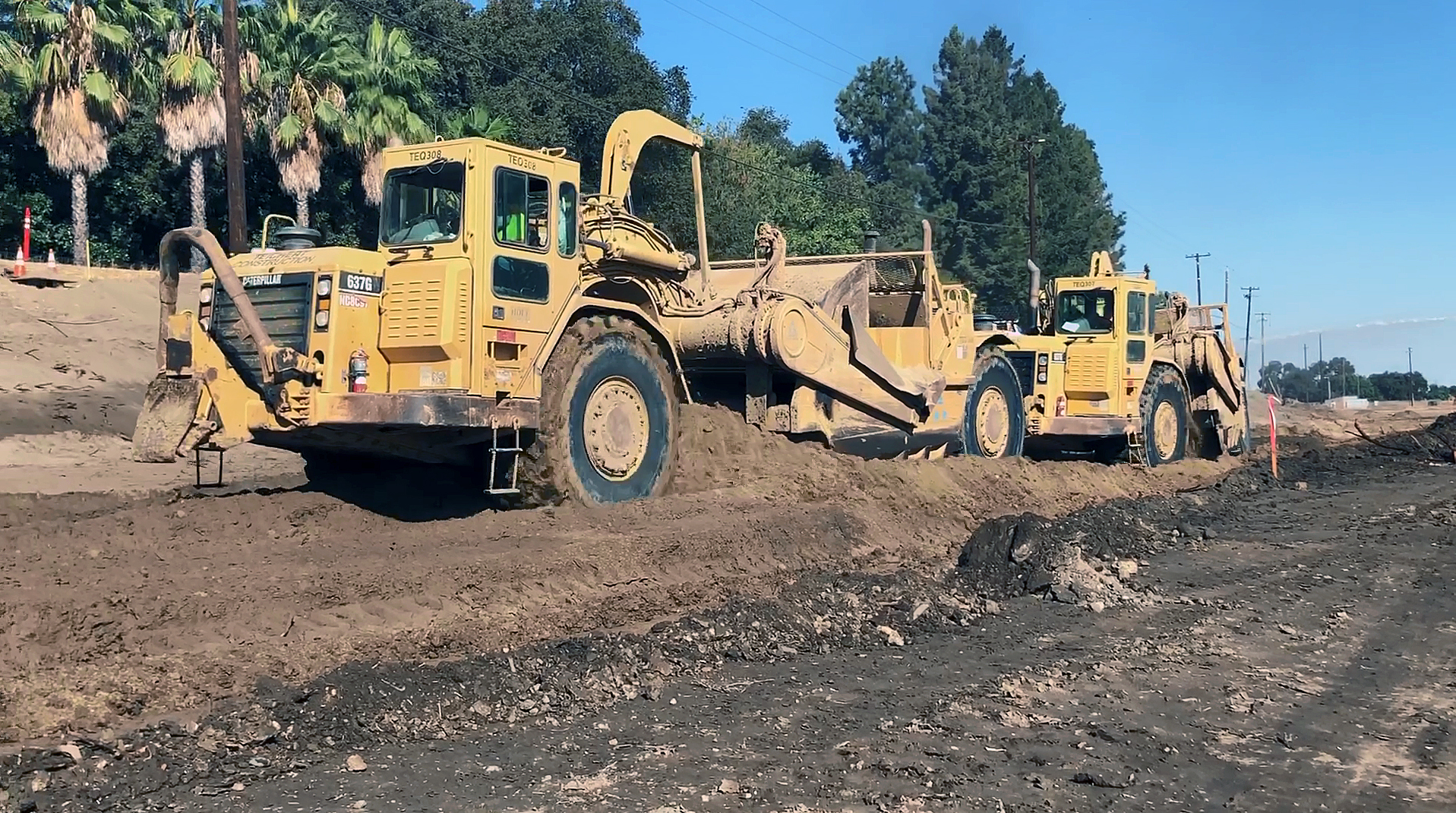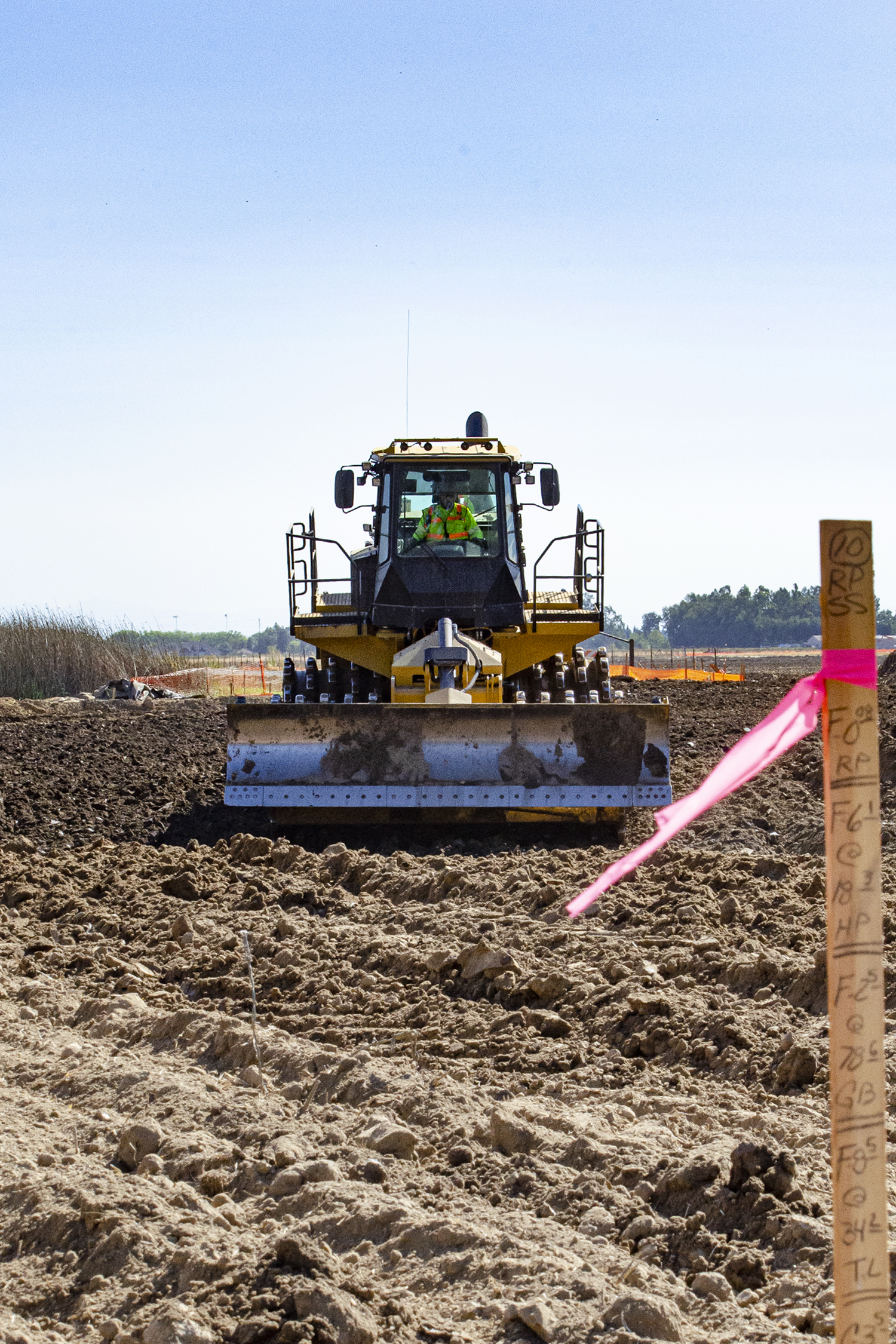An extensive construction site filled with steadily churning heavy equipment has sprung up along Garden Highway just past Radio Road. It’s large enough to make one wonder if a new housing tract is underway, but the work is a section – known as a Reach – of the U.S. Army Corps of Engineers Sacramento District’s extensive efforts to upgrade and improve 42 miles of levee surrounding the Natomas Basin.
This particular stretch of construction, known as Natomas Reach B, includes approximately 9.5 miles of improvements, including widening the existing levee.
Okay … But what exactly does that mean? It means there’s a lot of work to do between now and November 2021 to reduce the risk of flooding for the communities that live behind this section of levee. The following photo story describes the current work being done to widen the landside levee along the Garden Highway between Radio Road and San Juan Road.
If you would like to know if there is Corps-related work happening near you, check out our easy to use and highly informative Interactive Map.
If you want more information about Natomas Basin levee improvement project, check out www.natomaslevees.com.
PREPARING THE LEVEE SLOPE

A D6 bulldozer equipped with a mounted GPS unit strips the landside levee slope along Garden Highway. The GPS unit allows the operator to remove soil according to the slope and grade required in the project design. Two scrapers in the background are removing the soil from the dozer's stripping operation.
TESTING THE SOIL


LEFT: A Grade Setter with mounted GPS rod measures the elevation of the landside levee foundation area. Grade Setters communicate with equipment operators to ensure the site elevations are in compliance with the project design. RIGHT: A quality control field tester bags a soil sample for testing in the lab. The lab checks the sample for moisture, Atterberg limits, sieve analysis and other tests to determine if the soil is suitable for the landside levee slope widening. (An Atterberg limits test establishes the moisture contents at which fine-grained clay and silt soils transition between solid, semi-solid, plastic, and liquid states.)
MOVING THE SOIL WHERE NEEDED

Two Cat 637C Scrapers move soil from the borrow site to the landside levee foundation area. The soil is being used to backfill the inspection trench in the levee foundation along Garden Highway.
RIPPING THE SOIL

A Challenger tractor pulls a disk, ripping the levee foundation area in preparation for the landside levee slope widening. The tractor rips the foundation material to allow workers to remove roots and other debris.

CLEARING DEBRIS

Following the removal of large items and tree stumps, workers walk the entire site removing any remaining roots and debris from the landside levee foundation area. The roots must be removed to prevent the wood from decaying, which could result in air pockets and instability in the soil.

COMPACTING THE SOIL

A Cat 625F Sheepfoot Roller compacts the foundation prior to construction of the landside levee slope along Garden Highway near Radio Road in the Natomas Basin.
PREPARING SOIL AT THE BORROW SITE

A Cat D6 bulldozer mixes the soil in the Johnson Ranch borrow area at Garden Highway and Radio Road. The material is mixed and tested to ensure suitability prior to being used for construction of the landside levee slope.
Want to see the heavy equipment in action? Check out it out HERE